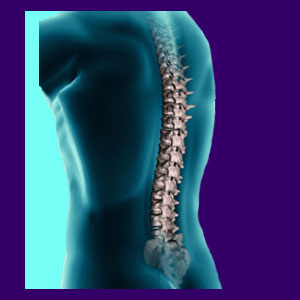
Do you have back pain after working out? Do you know why? We can help you to learn about the causes of post-workout back pain. After all, it is a real shame to go through all the effort to do something good for your body, only to suffer pain afterwards. Post-workout back pain is a common occurrence, but ranges greatly in its symptoms and severity. There is ‘good pain’ and there is very bad pain. It is of paramount importance to know which is which in order to prevent the development of chronic agony due to acute back injury or RSI syndrome.
This discussion focuses on back pain that is experienced after exercising. We will detail why this pain occurs, how to prevent it and what consequences can occur if the pain is ignored.
Preventing Back Pain After Exercise
Before working out, it is crucial to stretch and warm up the muscles of the back and the entire anatomy, in order to prevent shock and acute injuries from sudden physical exertion. Preparing for exercise should be just as important as the workout itself. We provide coverage of basic back stretches on this web resource, but recommend investigating a comprehensive source for best results. We have written a wonderful book on back exercises and stretches that is guaranteed to provide you with a safe and effective warm-up and fitness plan that will produce excellent results. You can find our book Back Exercises and Stretches as part of our proprietary pain relief program. Additionally, it is important to eat right and stay hydrated when exercising. We also cover these suggestions in the book detailed above.
Before working out, make absolutely sure that you fully understand how the exercises you intend to perform work and how to operate any apparatus that might be involved in your exercise program. Even a small error in technique or operation of a device can cause back injury and have long-lasting collateral consequences on your health and functionality.
Causes of Back Pain After Working Out
Post-workout back pain can come from several very different sources, including some which are serious and may require medical attention. Below, we examine the most common explanations for back pain after a workout:
Common back muscle strain is certainly the most common cause of post-workout pain. In order to build muscles, they must be strained in small amounts in order to disrupt the current muscular cell chain and facilitate building new muscle cells during the repair phase. Therefore strain is an inherent part of body building and is also a normal part of many fitness activities. Typical, expected degrees of strain will produce minor to moderate soreness, but not acute pain. This soreness will dissipate by itself in a day or two and this is why you are not supposed to work the same muscles on consecutive days. More severe strain can occur from overdoing it, lifting too much or exercising for too long. Acute strain might produce very sharp pain and should be managed with a variety of home remedies for back pain. Most muscular strain is not serious and does not require medical attention, although symptoms can be agonizing for the first 24 to 48 hours in extreme cases.
Muscular imbalances might develop over time from working out incorrectly. These imbalances might cause back pain after working out or might be symptomatic under other specific or general circumstances. Muscle imbalances might be linked to structural problems in rare instances, but are usually preventable through proper form and exercise planning.
Serious muscular issues might result from acute exercise-related trauma. These include torn tendons, ligaments and detached muscles. These scenarios will produce severe pain and functional impairment. They should always be managed by a qualified sports medicine physician or physical therapist.
Spinal trauma might occur in very uncommon circumstances, and might involve vertebral fractures, facet joint injury or herniated disc formation. Remember that most herniated discs are not painful, but some can be, although even symptomatic disc bulges usually resolve on their own, without medical care.
Muscular exhaustion can fuel ischemia pain, caused by oxygen deprivation to the muscles. This pain is usually transient, but might persist for 24 hours in some cases. Chronic ischemia is almost always the result of the mindbody interactions and may be related to physicophobia or other personality-derived concerns.
Back Pain After Working Out Consequences
Minor strain should not leave any negative consequences and in fact, are necessary to build muscles larger and stronger. More significant injuries may leave functional deficits for several days to several weeks time, depending on location, nature and severity.
Vertebral fractures sound terrible, but most are easily treatable using conservative care. Only in cases of spinal cord/nerve compression or spinal instability will fractures require invasive therapy.
Most herniated discs require no treatment and should not be symptomatic. Herniations that compress nerve tissues will often resolve organically, although this might take 6 to 12 weeks of patient waiting. Alternately, curative care in the form of spinal decompression or surgery can be utilized, although disc surgery produces the very worst outcomes of all spinal operations. Meanwhile, conservative care might help reduce symptomology, but will do nothing to address the actual prolapsed disc structure.
We find that many people stop working out after suffering a moderate to major pain episode. The event frightens them, producing a substantial nocebo effect and often commencing a chronic pain condition due to conditioning, rather than structural pathology. Therefore, we highly recommend treating all workout-related injuries with knowledge therapy, in addition to any physical medicine which might be utilized. This way, the lingering consequences of the injury are likely to be minimized and the person will likely resume healthy exercise as soon as they feel better, if not before a full recovery is accomplished.





